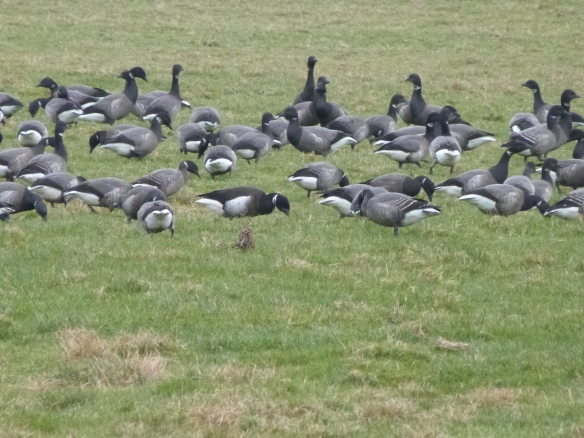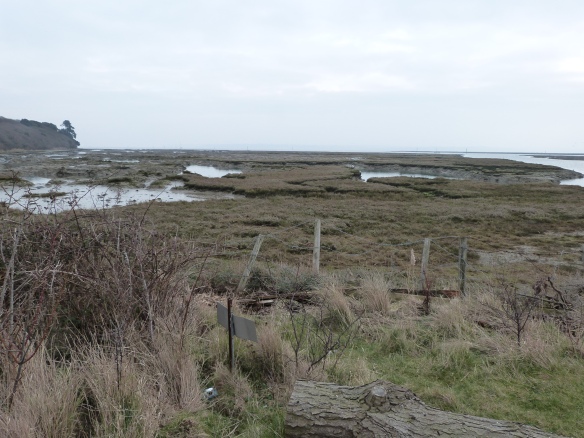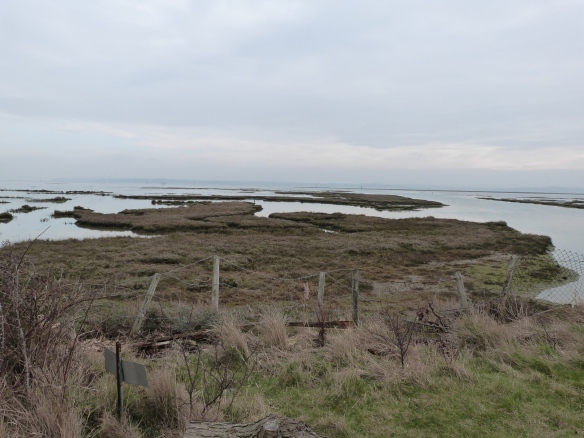Only kidding
It stands for Wetland Bird Survey. Once a month, up and down the country and across Europe scores of volunteers are out on wetland sites counting birds. I’ve been doing them for years, beginning in Chichester Harbour on the Sussex/Hampshire border back in my college days in 1991, right up until now when I have been counting at The Point since 1996. In my Chichester days we did the counts on a Saturday but for all of my Point counts it’s been Sunday, and for the majority of these it’s been raining.
Beginnings, setting the scene
Originally the counts started off in the sites as the BOEE – Birds of Estuaries Enquiry when the focus was purely based on coastal sites, later the counts became the Wildfowl and Wader Counts as more inland wetlands were added to the scheme, before eventually, and quite recently, becoming WeBS. If I’ve got any of this wrong, add a comment for enlightenment. My first counts were on the Chidham peninsular, an Osprey on my first count on its autumn migration was the first of many WeBS highlights. And I well remember scanning through and counting a flock of Brent Geese feeding on a wheat field – I usually always work through a flock from left to right – and as I neared the end of the flock they all took flight, only to move about ten yards, thus leaving me to start all over again. Grrr. I also seem to remember it usually being cold and wet and the count area affording no cover from the elements. After a few years away from counting, with my new job at The Point came the responsibility of taking on the largest of the available count sections when the original counter became ill. He subsequently died and left me in the lurch (am I allowed to put it that way?, did exposure have something to do with his death?)** answers at the foot of the page.
Problems
One of the biggest problems on my section is, being on the south coast, I’m always invariably looking into the sun – on the rare occasion it’s out on a count day. That provides the first problem in that during the winter when the sun is low the reflection off the water means most id is done on silhouette. During the summer the heat haze and reflection combine to make even that difficult, but fortunately there are fewer birds to count in summer so it makes the task a bit easier. The major problem is my section is exposed to the prevailing south-westerlies that usually accompany the count, bringing with them copious amounts of rain. It is possible to do the bulk of my section from the car if the weather really is against me, but I’ve only resorted to that on surprisingly few occasions over the years.
So what’s it all about?
The reasoning behind the counts is to get some idea of the numbers of birds using waterways and their relationships with each site. The Wash generally by virtue of its size records the highest numbers of birds on a single count site of all the UK counts, but if we add all of the sites within the Solent together – from Hurst spit in the west to Selsey Bill in the east – the Solent has a higher figure. Given that many of the birds in the Solent move between the various harbours and estuaries, it could be argued that the Solent is more important that the Wash. Counts are generally undertaken at high tide as the waders are coming in to roost when their food source in the mud is covered by the tide. The counts also include ducks, geese, divers, grebes and gulls. The counts are co-ordinated so that all sites are counted together to prevent double counts if birds move from roost to roost due to disturbance. Another aspect is that high tide on count day usually spans Sunday lunch time – makes no difference to me but does mean missing the odd 13.30 football kick-off!. The count figures are collated locally and nationally and published into what is becoming a rather weighty tome by the Wildfowl and Wetlands Trust/British Trust for Ornithology. By comparing sites, years and a whole load of other stats that I don’t try to understand an idea of trends in bird populations, breeding success and distribution can be built up. These in turn provide the starting points for effective conservation, not just of the birds but of their habitats too.
Everything changes, nothing stays the same…
With a nod there to Jewel, I’ll come onto some of my figures. Since my first counts at The Point in 1996 I have been aware of a noticeable decline in bird numbers, particularly within certain species. During this time winters have become milder and with it the suspicion that many birds are simply not bothering to make the long and potentially risky flight across the North Sea, when there’s plenty of food on the continent and mild weather with it. Once of the first things that struck me on my section was the sheer number of Dunlin, often around the 6,000 mark in the winter months, which took a while to get to grips with, but like most species, they have a favoured roosting area, so it was more a question of counting the small flocks as they arrived at or headed to the roost, it became easier as time went by. Partly this was down to getting more experienced – once a month, and numbers gradually building during Sept/Oct, peaked in Dec/Jan then slowly declining by March/April. Partly, it was also down to a reduction in the overall number of birds wintering here.
So for comparison, I have rooted out my figures for Sunday 10th February 2002, and compared them for selected species, below with yesterdays count, Sunday 12th February 2012 (The first figure is 2002, the second 2012):
Oystercatcher: 112,126; Shelduck: 41,51; Redshank: 62,64; Brent Goose: 544,258^; Dunlin: 2306,76; Grey Plover: 456,13; Pintail: 4,69; ^ There were 282 Brent Geese elsewhere on other count sections.
On the downside the declines in Dunlin and Grey Plover could be a genuine decline of the species due to any number of factors, or they could just be staying further east because of mild conditions. On the upside, it makes counting a lot easier and entails less time Standing in the Rain. A nod to Wishbone Ash, what I don’t have to hand are weather conditions for 2002, but it was probably raining…In contrast, back in 2002 I recorded 8 Knot, which were always a count rarity until 2009 when they shot up to 500 or so, only to drop to single figures again in recent times, and none yesterday. The increase in Pintail is most likely due to day-to-day movements, they move around a lot and most of the nearby open water was frozen yesterday which forced them out onto the saltmarsh. They’re also fabulous birds so I thought I’d give them a mention.
Yesterday’s count (12/02/12) was surprisingly dry with little wind and the early frost had disappeared before the lunchtime high tide.
Aside from an overwintering Green Sandpiper things were generally fairly quiet, a Black Brant amongst the Brent Geese as it has been all winter was the only real highlight.

Black Brant - the front central bird with the darker black head and neck and bold white patch on the side - compare with the Dark-bellied Brent Geese around it.
Other news
The white-tipped Wood Pigeon has been back in the garden recently – see white-fronts and white-tips post on an almost daily basis and has given me a chance to get this better picture of its unusual tail markings. My non-natural history programme tv list has climbed to 23 since January 1st and my year list is stalling at 124 – the problem with seeing loads of birds in the early days of the year, and limiting birding to Friday mornings and anything past the window.
Until the next time…
* answers: probably not, and no it didn’t.



